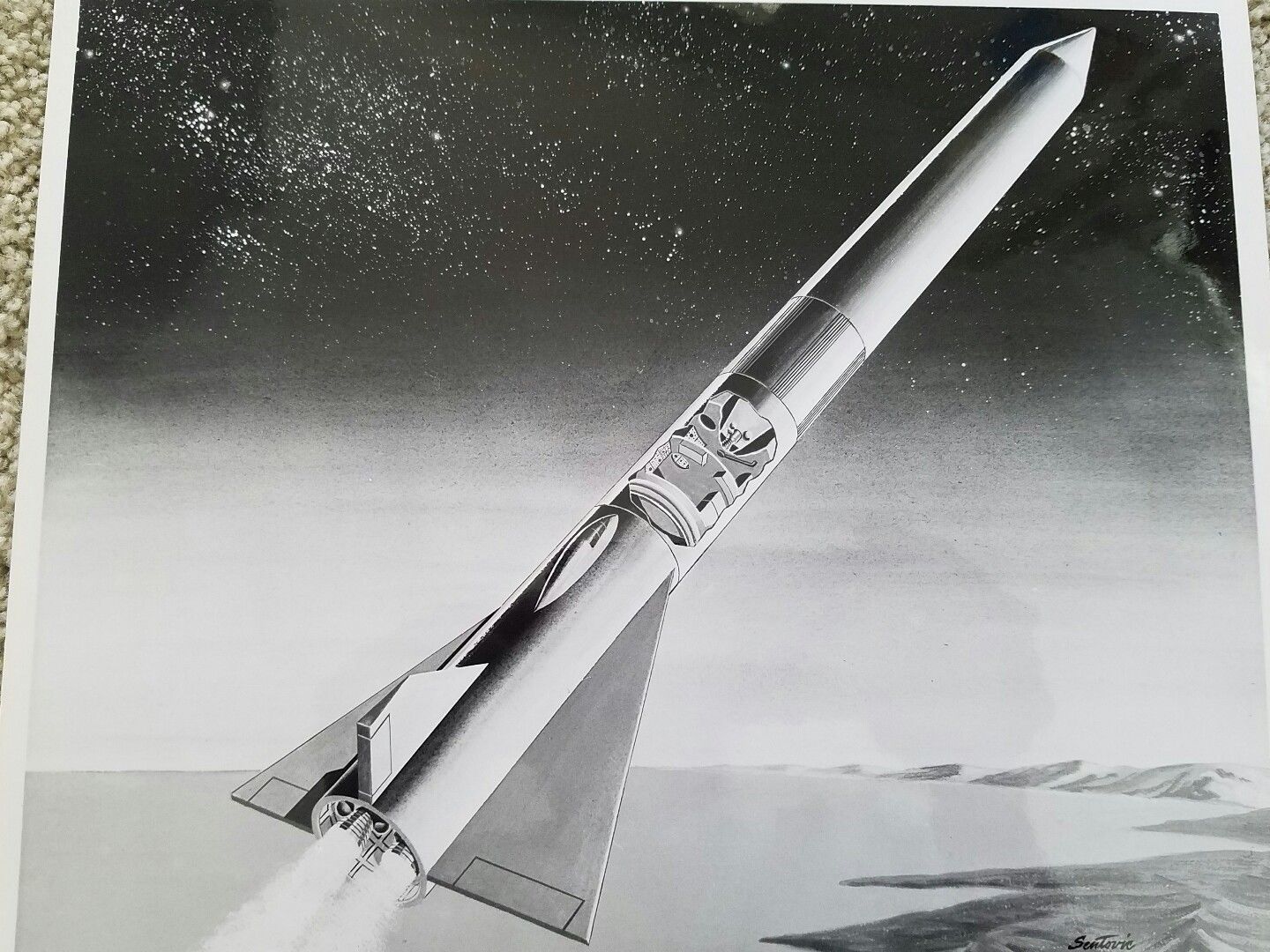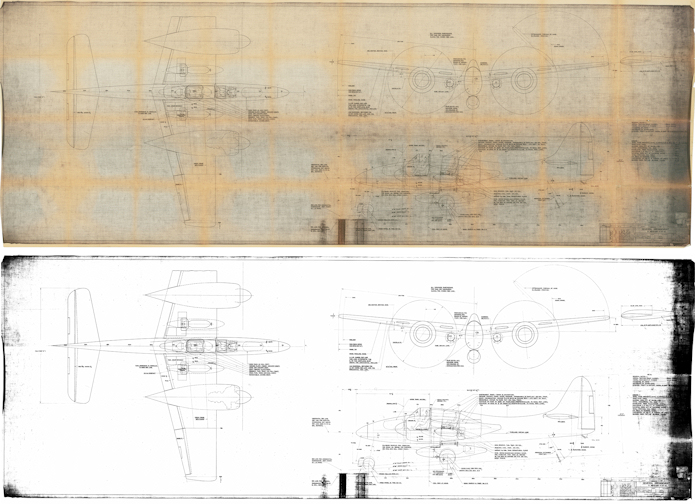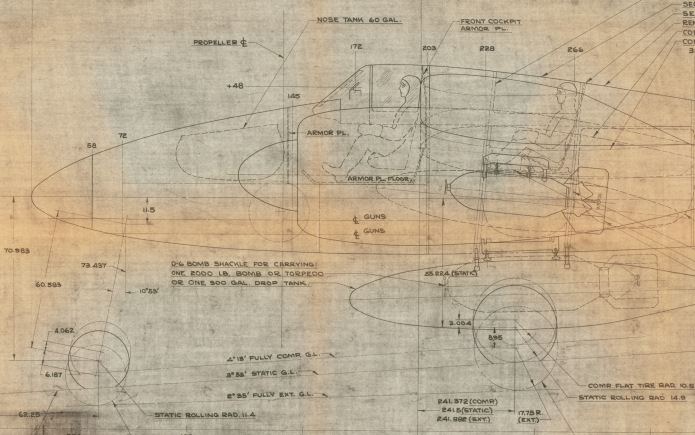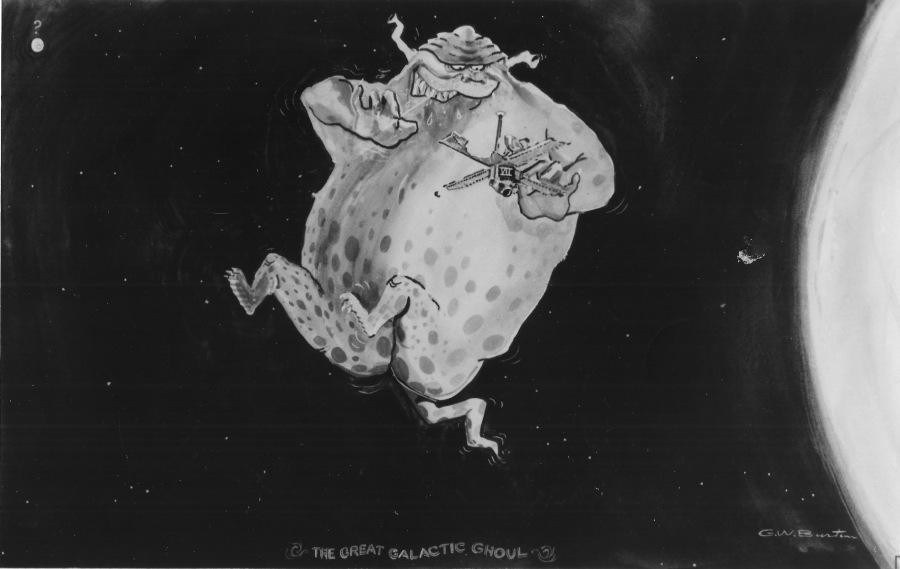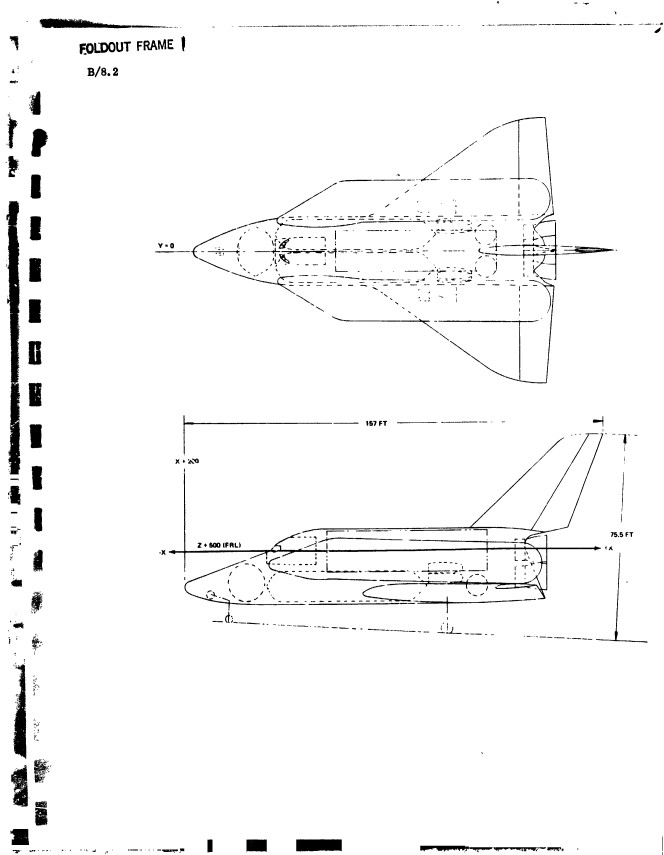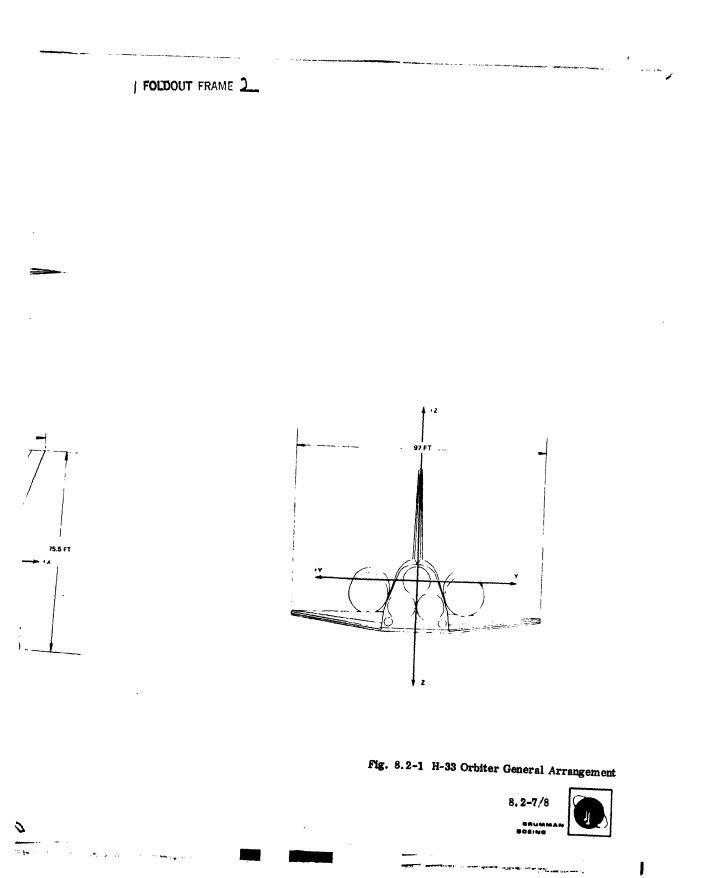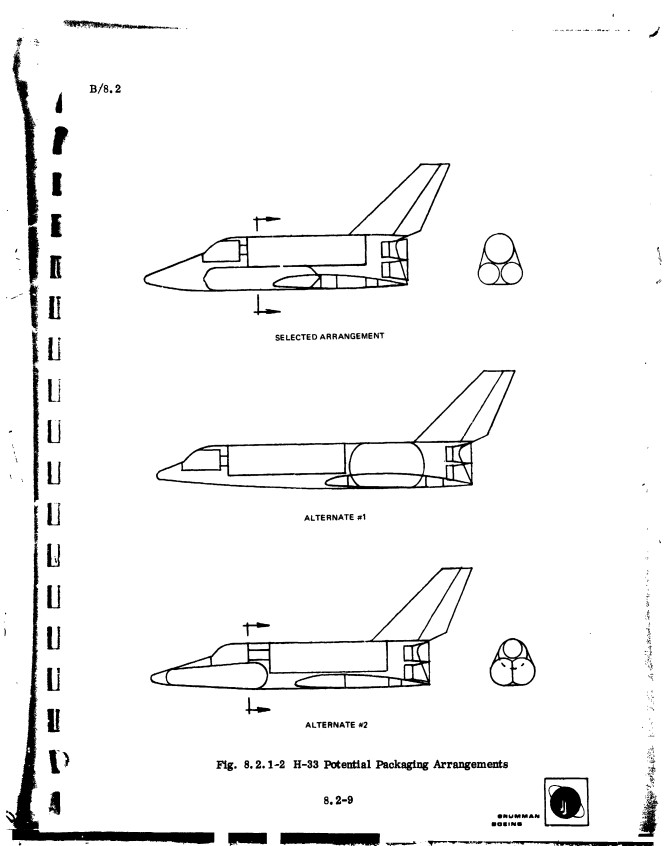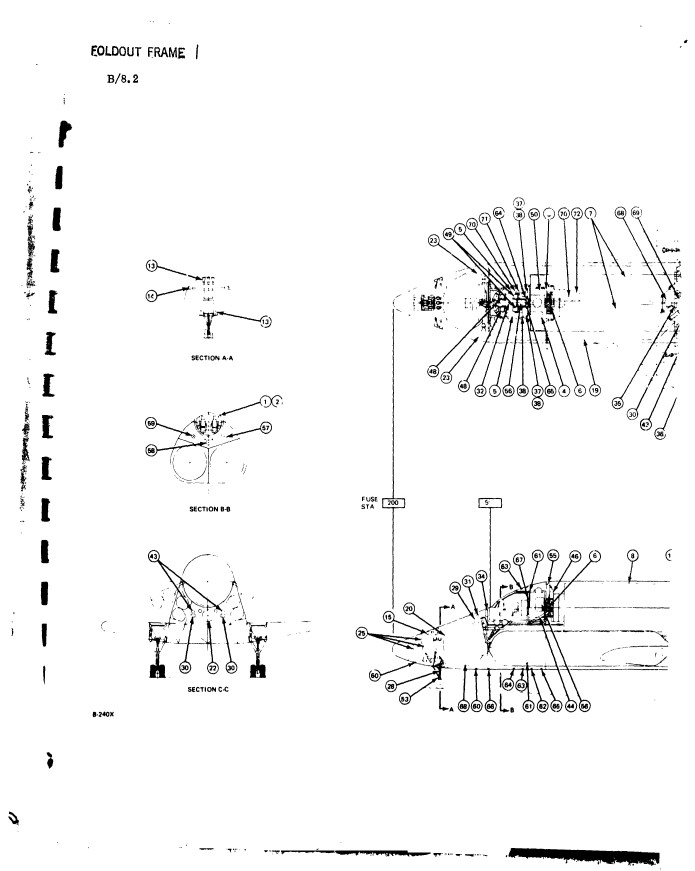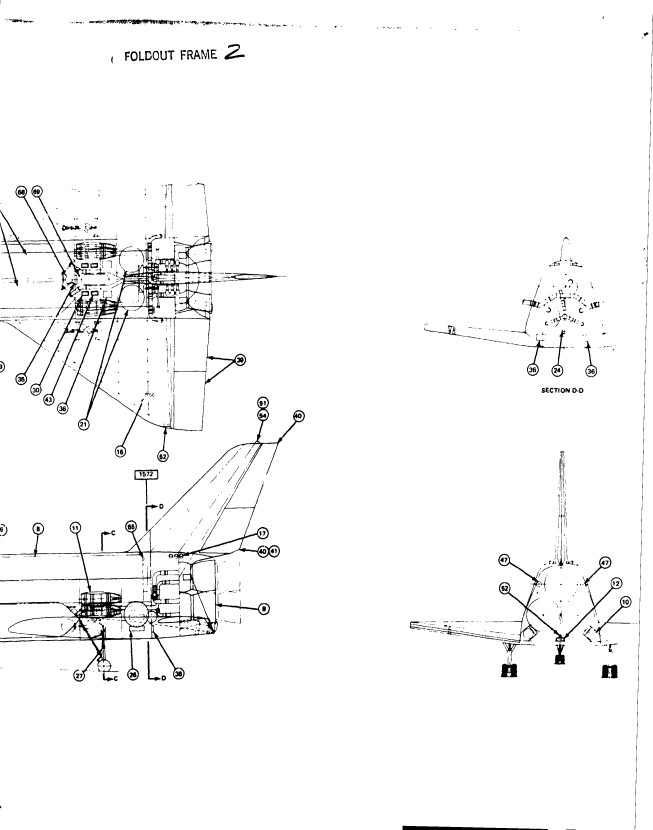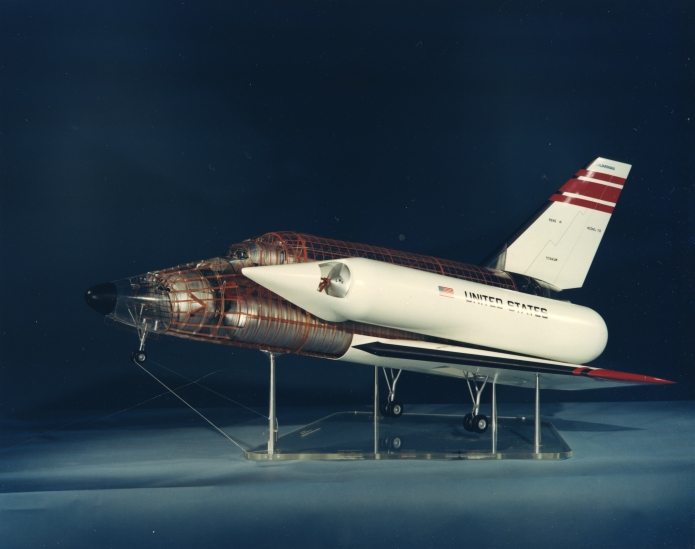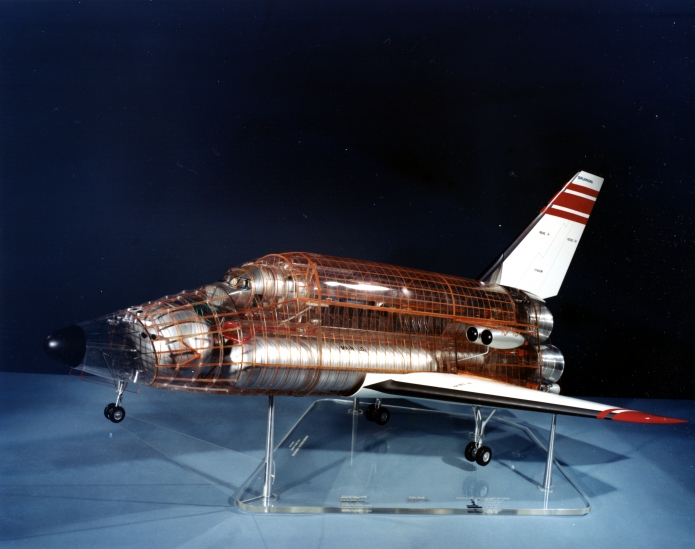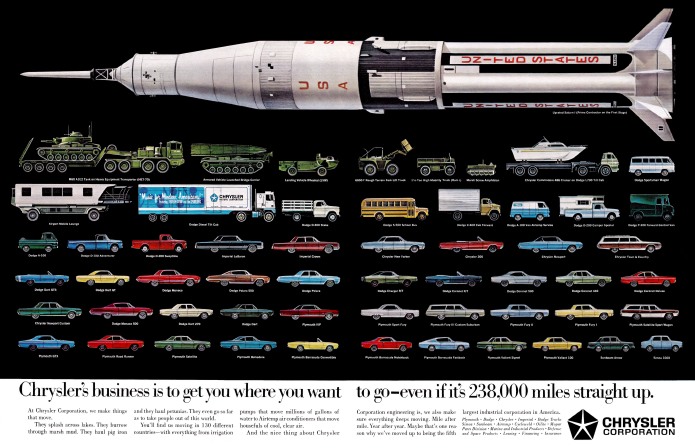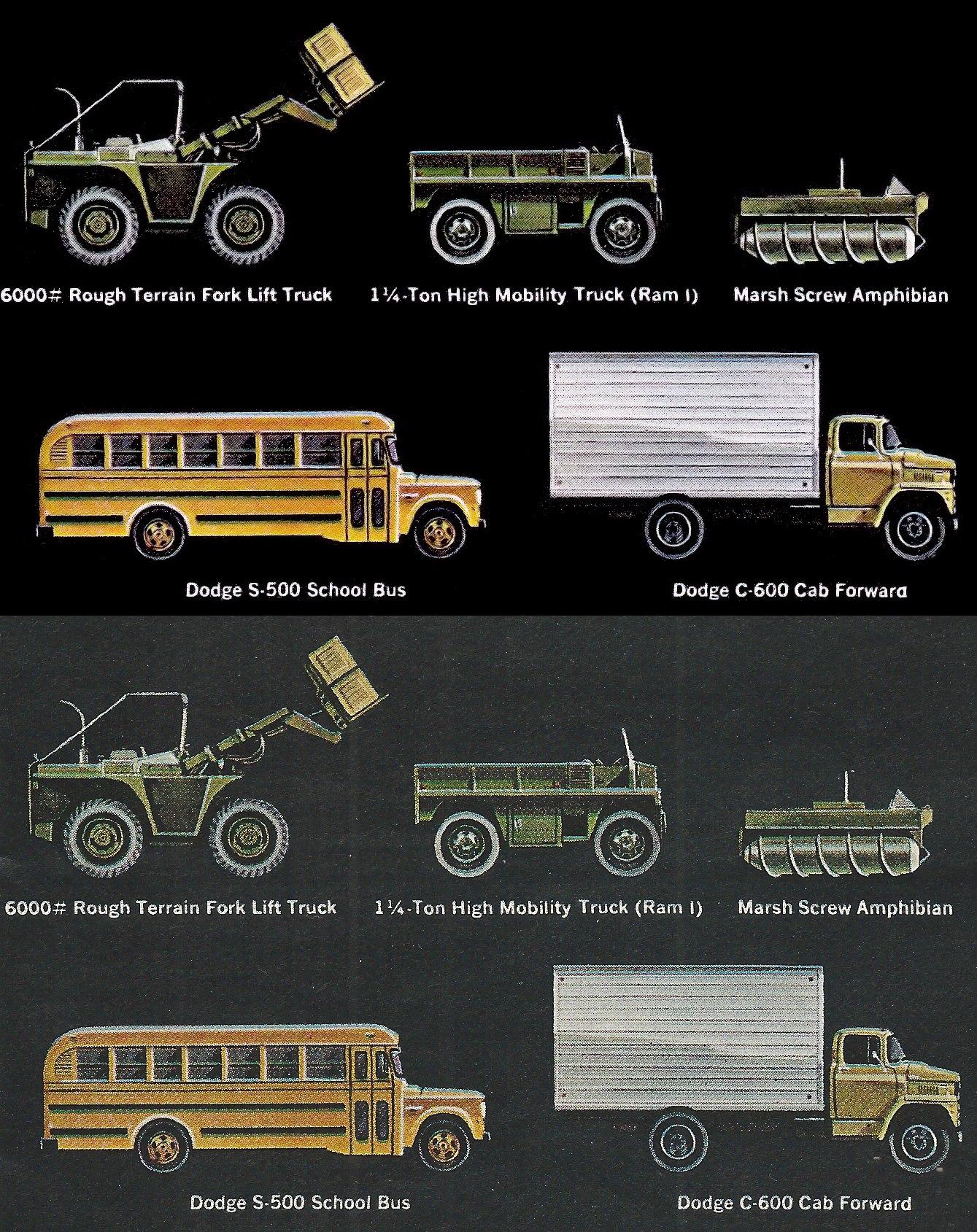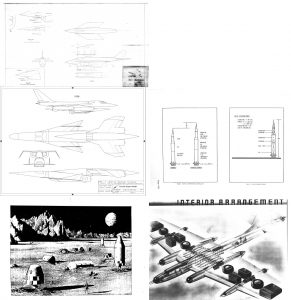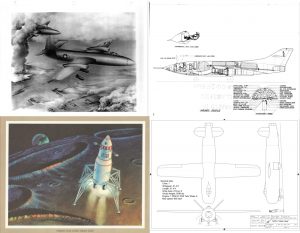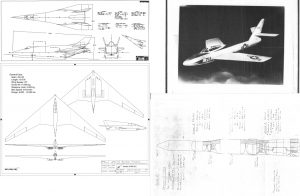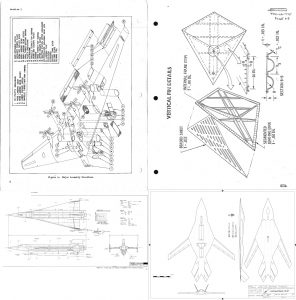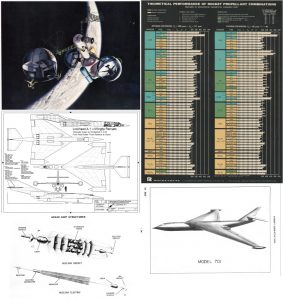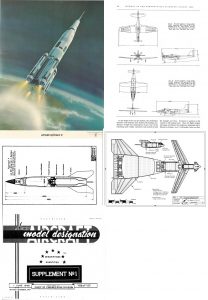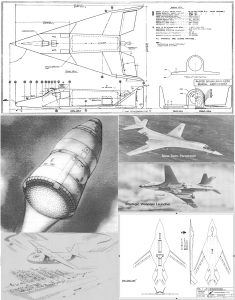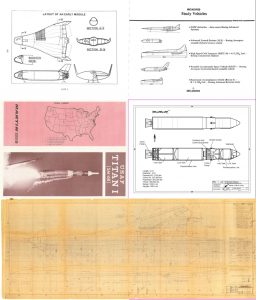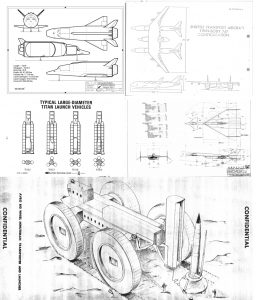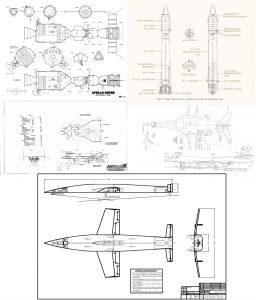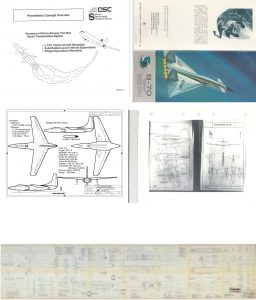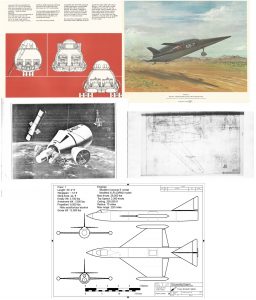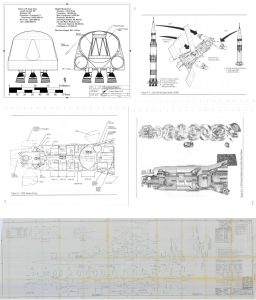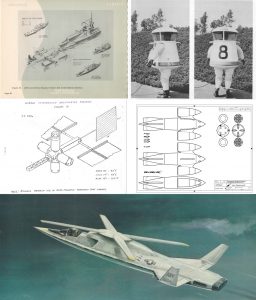Recently on ebay were a set of 8X10 glossies, vintage Convair artwork depicting early spacecraft and launch vehicle concepts. I had my bid in… and was sniped in the last few seconds. Oh well. Anyway, one of the more interesting images was this one of the Convair “Helios” developed by or for Krafft Ehricke… a chemical rocket first stage equipped with wings for glide recovering and a nuclear powered second stage with a “tractor” arrangement to separate the nuclear engine from the payload – essentially a small manned laboratory to land on the moon. The second stage would unreel something like half a miles worth of cabling and drag the payload along behind it, relying on distance rather than physical radiation shielding. The second stage would take the payload all the way to the lunar surface, gently lowering it down at the end of the cables, then land Way Over There Somewhere. A modern design would, I would hope, include electrical cables and would serve as a power generator.
A middling-resolution scan of the same image was posted back in January. One day I shall get a clean high-rez version. If that day is a particularly glorious day, it will come not only with the other images created for the Helios project… but they’ll also be in color.
